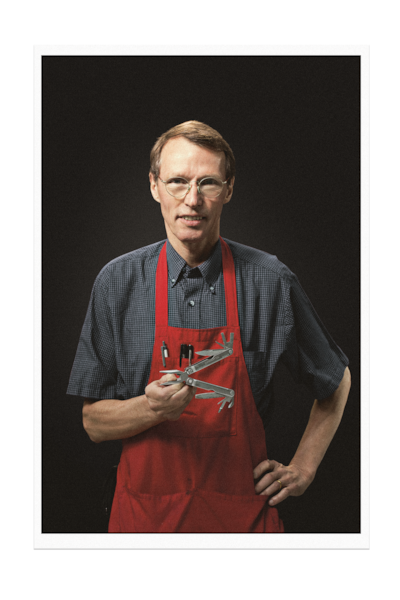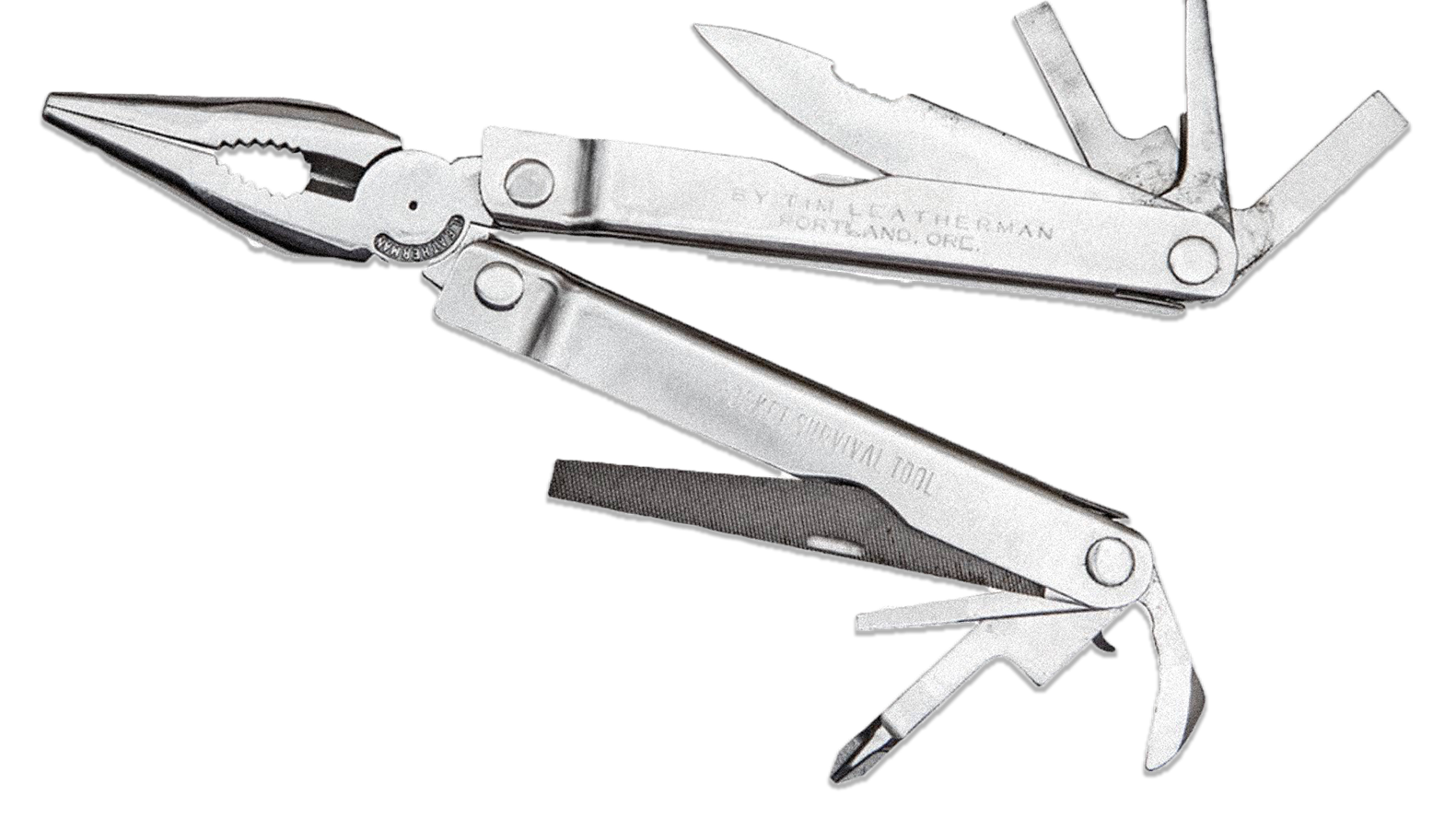The rusty Fiat kept breaking down, and Tim Leatherman kept wishing he had brought a pair of pliers. The year was 1975, and the young Oregon State University engineering grad was on a budget trip to Europe with his wife, Chau. Then he had a brain wave: Why not design a pocketknife with a pair of pliers inside?

Leatherman spent three years hunched over a vice in his brother-in-law’s garage and came up with a chunky prototype nicknamed “Mr. Crunch.” Retailers shrugged. “It took some time to prove to people why they needed it and how it would benefit their everyday lives,” he says. After five years without a single sale, he got a big break in 1983: Outdoor superstore Cabela’s ordered 500 units of the “pocket survival tool” for its mail-order catalog.
Something about the ingenious design gripped the popular imagination. The company sold 30,000 units in 1984, and since then, the Leatherman has built a worldwide reputation as a clutch tool for backpackers, anglers, makers, and anyone in a pinch. There’s the guy whose truck plunged through the ice on a frozen lake. He rescued himself from drowning by stabbing his Leatherman into an ice floe and hauling himself out of the water.
Today, the Leatherman factory in Portland employs 400 workers and makes more than 30 different models. The company is a pivotal component of the local knife and tool industry, which includes Coast, Kershaw, Benchmade, CRKT, and Gerber. And the tool helped Portland establish itself as a home for creative design.
Advice to live by: “Create a community in which it is a pleasure to live, that supports local businesses and has good libraries and schools that foster creativity and problem-solving skills in young people, and ensures they have opportunities to learn trades and technical skills they might need to bring their ideas to life,” Leatherman says.
If you’re a budding entrepreneur, he has some advice. “Self-educate,” he says. “Learn what you need to know as you go along. Remember, the best salesperson for your invention is you. Persevere. There is a fine line between perseverance and failure to accept reality. If you are going to err on one side or the other, stay with it too long rather than give up too soon.”
Next Story > 1983: Joanna Priestley
 Opens in new window
Opens in new window
